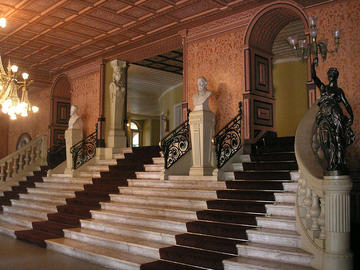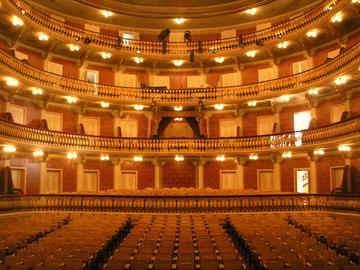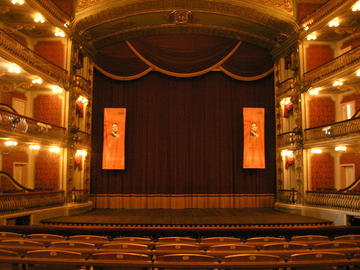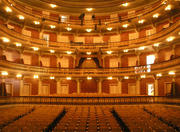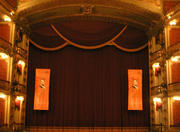Paz Theater Picture 5
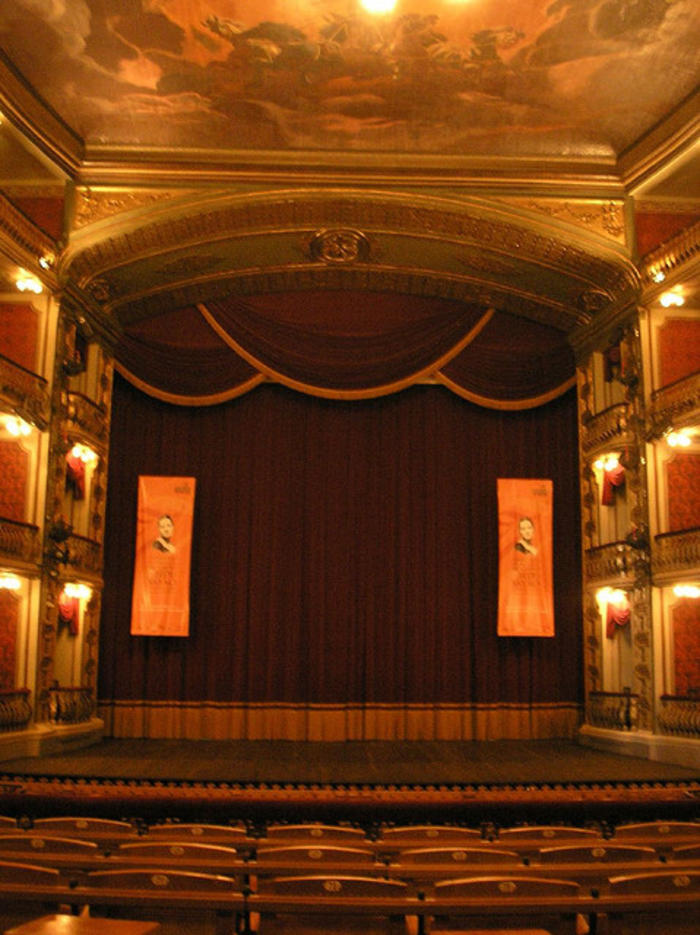
More information on Paz Theater in Belem Photo by: Santa Brígida
Paz Theater in Belem
The Teatro da Paz (Theater of Peace) was founded on February 15, 1878, during the heyday of the boom, when there was a great economic growth in the region. Belém has experienced a significant process of socio-economic transformation in this period, coming to be called "The Rubber Capital." But despite this progress the city has not had a large theater, capable of receiving spectacles of lyric. Seeking to satisfy the yearning of the society of the time, the provincial government hired the military engineer José Tiburcio de Magalhães that initiates the architectural design inspired by the Scalla Theatre of Milan (Italy). In July of 1869 begins its construction, and highlighted the Neoclassical architecture. Opened as Our Lady of Peace, referring to the end of the war with Paraguay, had its name shortened to Peace Theatre two days after the inauguration. Decorated simply was gradually embellished with new decorations and paintings highlighting the Italian Domenico D'Angelis and Capranezi. In 1905 a significant reform is reaching its final form. ENTRANCE HALL The lobby consists of decorative materials imported from Europe: English in the cast iron arches of the doors, Italian marble staircase, chandelier French, Carrara marble busts of the Brazilian writer José de Alencar and Gonçalves Dias, bronze statues French; floor Portuguese stone mosaics and glued to the stick Gurijuba (fish found in the region), painted walls and ceiling representing the Greek arts. HALL OF FRIZ In 1905 it closed the main door to access the concert hall, since it undermined the acoustics in its place is put a mirror in French crystal. In addition to the mirror were added in French stone statues and walls were set in enamelled iron plates containing the time the regulation stating that "smoking is prohibited." The floor was decorated in parks, using the woods as Acapu regional and yellow stick. Concert hall The theater originally had 1,100 seats, to 900 today. The chairs retain the style of the time in wood and straw to the appropriate climate. The balustrade is all in English iron gold leaf. The ceiling fresco painting presents central elements of Greco-Roman mythology an allusion to the God Apollo leading the Goddess Aphrodite and the Muses of the arts Amazônia. The center of the ceiling has been adapted to American bronze chandelier that replaced a large fan that helped mitigate the heat. On the walls, floral, paintings mimic wallpaper. The lining of the boxes were painted obeying the social hierarchy of the time, for the first grade were used the following locations: balcony, the audience, friezes, cabins and procênios 1st order, for the 2nd class: galleries, boxes and procênios 2nd order and for 3rd class paradise. The authorities were reserved procênios as mayor police chief and school. The imperial box, now the Governor is located in a first order of cabins is decorated with wood furniture regions. The curtain painted in France in the studio Carpezat titled "Allegory of the Republic" was opened in 1890 in celebration of the Brazilian Republic. NOBLE HALL The Main Hall (Foyer), where the nobility used to gather for dances, small recitals and during breaks of the shows, a space is highly decorated with mirrors and crystal chandeliers and French Carrara marble busts of two great composers time: Carlos Henrique Gomes and Gurjão. The mezzanine of the hall was the site used by musicians and social events attended by people of paradise in the evening of performances. As for painting the ceiling is made of Pernambuco in 1960 Armando Balon, which is inspired by the muses of music flanked by Amazonian flora and fauna. The walls, painted by the Italians, with neoclassical motifs depict bouquets of flowers. FRONTERA At the beginning of the twentieth century the façade was the most significant point of retirement. Because there's controversy in the standard neoclassical Italian: rule columns in pairs and odd entries, but instead opened with seven columns and six entries. In the reform of 1905 was the pediment retreated, removing a column and an entry placed medallions to decorate the muses who represent the arts, comedy, poetry, music and tragedy, the dance side. At the center of the Coat of Pará State Luminaires the balustrade represent a day and at night. box office Time ticket sales 09:00am until the beginning of each show, regardless of day of the week. Payment: Cash or check as per the production of the show. Monitored visitation Value: R$ 4,00 with half price for students. Time: 09:00 am to 5:00 pm (Monday to Friday) for visitation on Wednesdays is free. 09:00 am to 12 noon (Saturday) * Always one at a time. Schools Schedule The application of this visit can be made via e-mail: theatrodapaz@supridados.com.br, fax: (91) 40098760 or delivered in Theater Management. The School Scheduling is done only for the hours of the morning on Tuesdays, Thursdays and Fridays. Phone: 55 + (91) 4009-8758 / 4009-8759 Phone Fax: 55 + (91) 4009-8760 E-mail: bilheteriatp@supridados.com.br Address: Rua da Paz s / n º - Centro - Belém - Pará - Amazônia - Brazil - CEP: 66017-210 http://theatrodapaz.com.br/web/index.php?option=com_content&task=view&id=19&Itemid=35
More Photos of Paz Theater Picture 5
